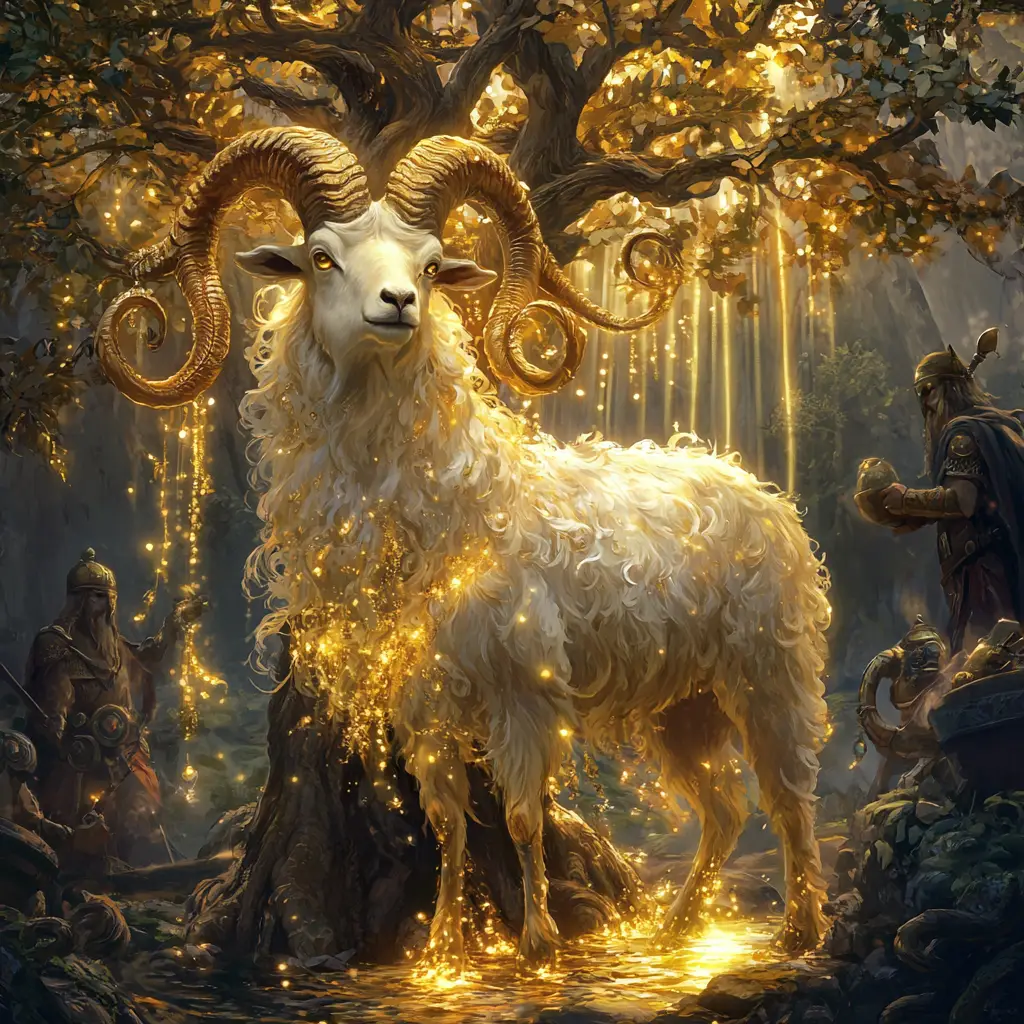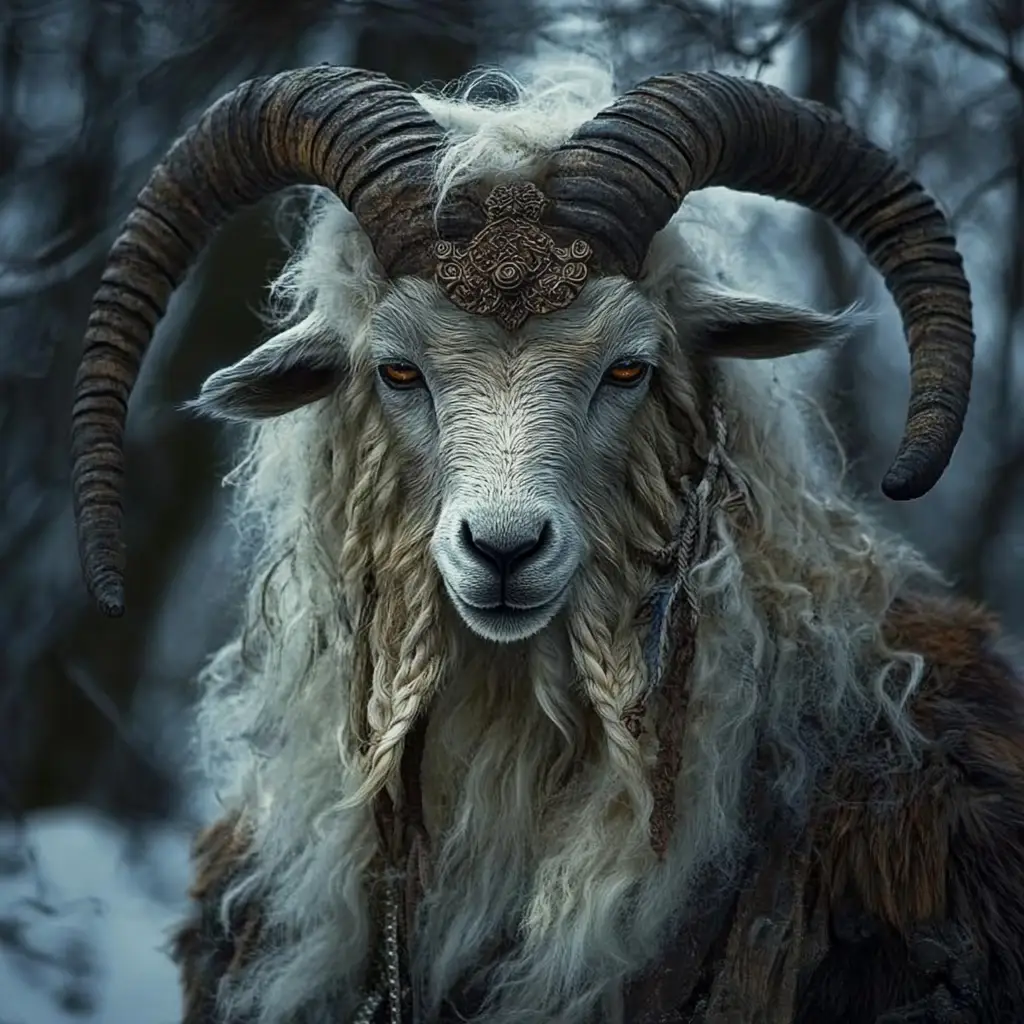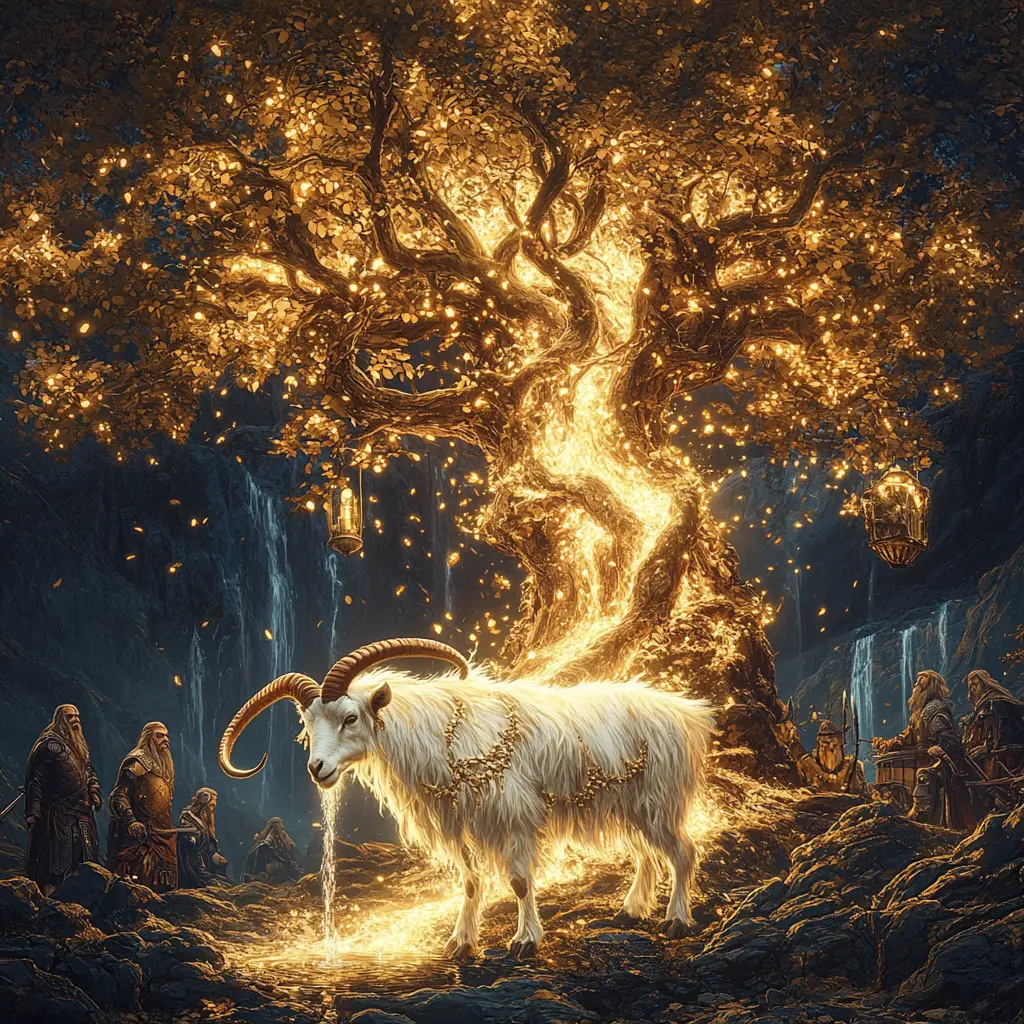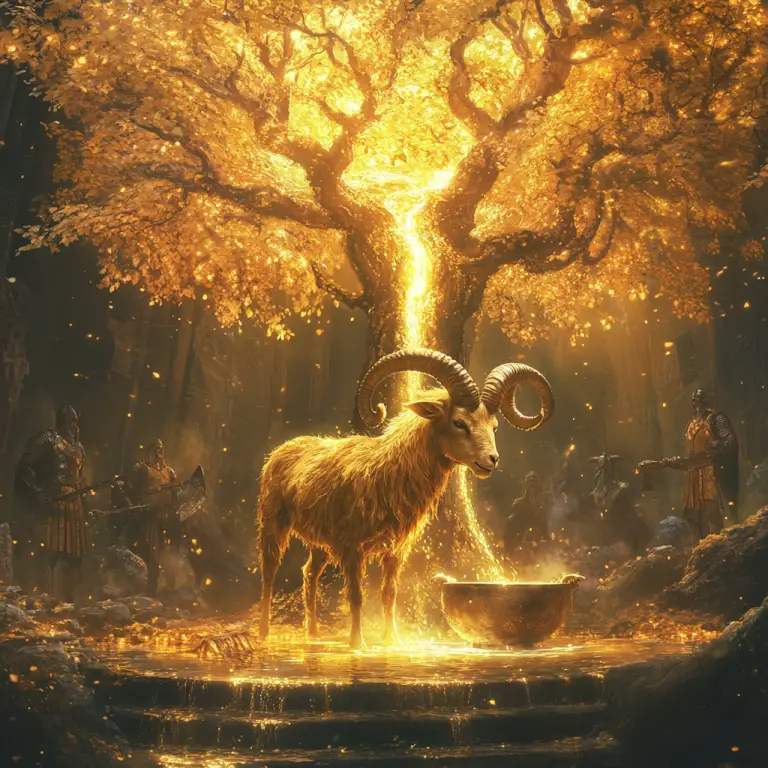Heidrun is a significant figure in Norse mythology, known as the mythical goat that resides in Valhalla, the hall of the fallen warriors. Her role is closely tied to themes of sustenance and abundance, and she holds a unique place in the mythology. Here’s a detailed look:
Description and Role
Heidrun is a magical goat who feeds on the leaves of the sacred tree Læraðr, which is often equated with the world tree, Yggdrasil.
She produces an endless supply of mead, a drink of great importance in Norse culture and mythology.
Mead Production
The mead flows from Heidrun’s udders into a massive cauldron, providing an eternal supply of drink for the Einherjar, the warriors who have died bravely in battle and now feast and prepare for Ragnarok in Valhalla.
This mead symbolises vitality, joy, and the rewards of valour in the afterlife.
Symbolism
Abundance and Sustenance:
Heidrun represents the divine provision of endless resources for the deserving. Her constant production of mead ensures that the warriors are always well-supplied, reflecting themes of prosperity and renewal.
Connection to Valhalla:
As part of the afterlife setting in Norse mythology, Heidrun contributes to the idealised depiction of Valhalla as a place of eternal feasting and preparation for the final battle.
Connection to Nature
The association with Læraðr ties Heidrun to the natural world and the cosmos’ interconnectedness, as the tree itself is often linked to Yggdrasil, the tree at the center of the Norse universe.
Cultural Importance
Heidrun’s role highlights the Norse emphasis on community and reward for bravery. The constant mead production is a symbol of divine favour and the well-earned comfort of the warriors in the afterlife.
Heidrun stands as a symbol of nourishment, vitality, and the divine rewards of bravery, underscoring the Norse themes of cyclical life, nature’s bounty, and the preparation for Ragnarok.



